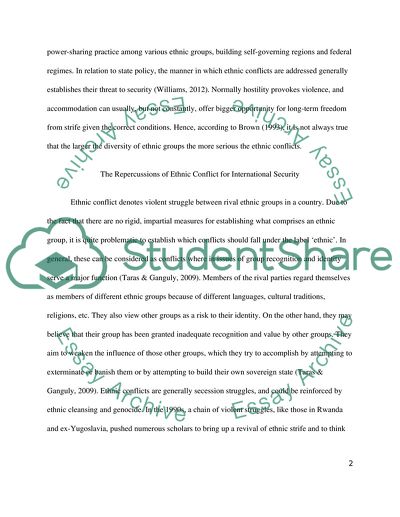Cite this document
(The Level and the Possibility of Ethnic Conflicts Between and Within Essay, n.d.)
The Level and the Possibility of Ethnic Conflicts Between and Within Essay. Retrieved from https://studentshare.org/politics/1797280-do-ethnic-conflicts-matter-as-a-security-threat-in-the-age-of-international-terrorism
The Level and the Possibility of Ethnic Conflicts Between and Within Essay. Retrieved from https://studentshare.org/politics/1797280-do-ethnic-conflicts-matter-as-a-security-threat-in-the-age-of-international-terrorism
(The Level and the Possibility of Ethnic Conflicts Between and Within Essay)
The Level and the Possibility of Ethnic Conflicts Between and Within Essay. https://studentshare.org/politics/1797280-do-ethnic-conflicts-matter-as-a-security-threat-in-the-age-of-international-terrorism.
The Level and the Possibility of Ethnic Conflicts Between and Within Essay. https://studentshare.org/politics/1797280-do-ethnic-conflicts-matter-as-a-security-threat-in-the-age-of-international-terrorism.
“The Level and the Possibility of Ethnic Conflicts Between and Within Essay”, n.d. https://studentshare.org/politics/1797280-do-ethnic-conflicts-matter-as-a-security-threat-in-the-age-of-international-terrorism.


